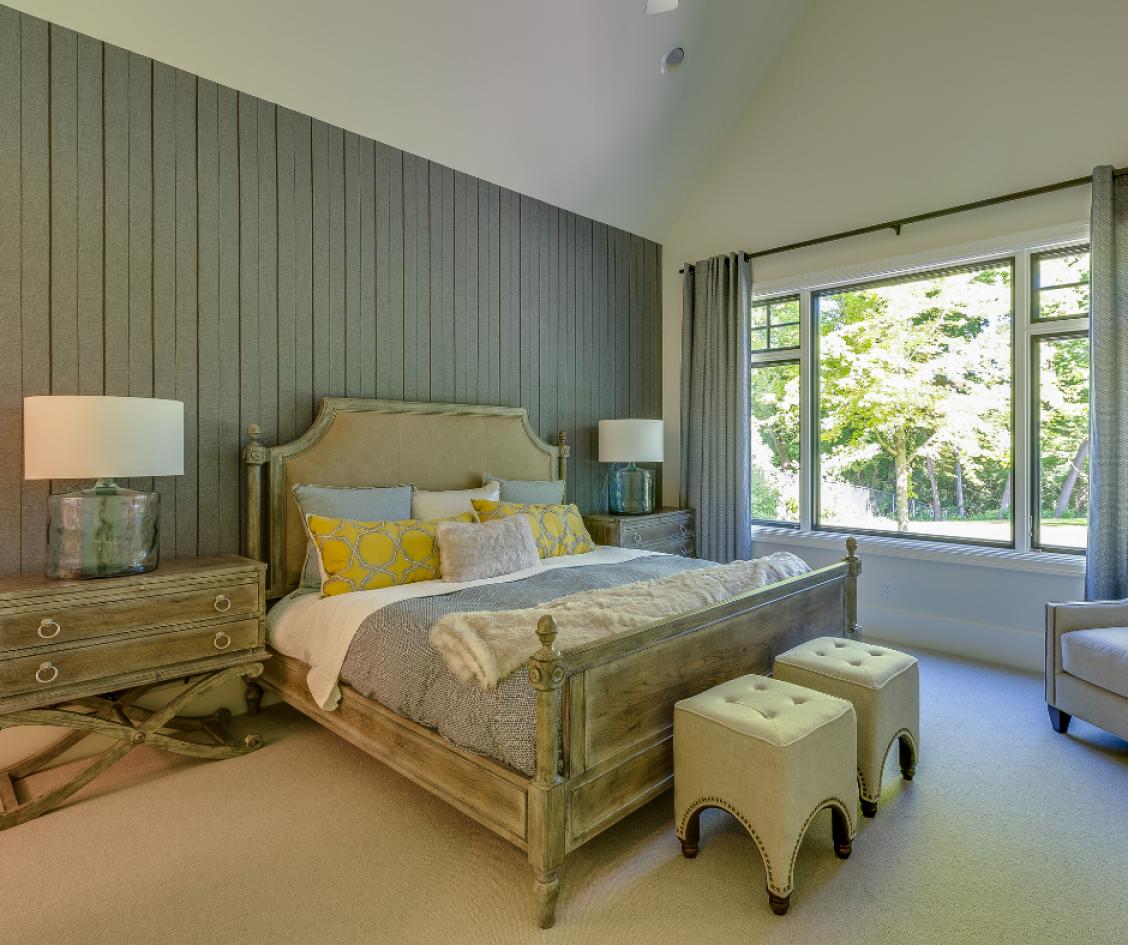The Art of Accent Walls: Transforming Spaces with Creative Painting

Accent walls have become a popular element in interior design for repurposing areas and infusing a room with creativity. An accent wall is a feature wall that contrasts with the other walls in the space and is frequently decorated with a unique color, pattern, or texture. With this idea, homeowners can add personality and flare to their living spaces without having to stick to the traditional paint color scheme. Let's explore concepts and methods for creating accent walls that can revitalize various rooms in your home.
Recognizing Accent Walls' Effects
An accent wall's main goals are to grab the eye, produce visual interest, and generate a focal point in a space. It provides as a blank canvas on which to experiment with hues, designs, and textures that could be too overpowering if used on every wall. When properly executed, an accent wall may drastically change a room's ambience and provide movement and visual appeal.
Selecting the Appropriate Wall
Selecting the ideal wall for your accent is crucial before you start getting creative. Ideally, choose a wall that attracts the attention on its own, like the wall behind the bed in a bedroom, the wall across from the door, or the area around a fireplace. Consider architectural elements that can amplify the impact of the accent, such as alcoves, recesses, or sculptural walls.
Selection and Color Psychology
Color is a powerful tool in interior design, and color selection is especially important for accent walls. Think about the psychological effects of color on atmosphere and mood. Vibrant and strong hues, such as intense blues, intense reds, or energizing yellows, can give a room drama and coziness. Conversely, muted tones or gentle pastels can produce a peaceful and tranquil atmosphere. For a unified and well-balanced appearance, the accent wall's hue should complement the room's current color palette.
Methods for Inspiring Accent Walls
· Bold Solid Colors: Selecting a striking color contrast is a traditional accent wall technique. The focus wall is immediately brought to light with this easy-to-use but effective technique.
· Try with different textured finishes, such wood paneling, imitation brick, or textured wallpaper. These enhancements give the accent wall more depth and dimension, making it a more engaging surface both to the touch and the eye.
· Geometric Patterns: To create a contemporary and energetic appearance, use geometric patterns. Painting chevrons, stripes, or even a geometric mural could be part of this. To create exact patterns and neat lines, use painter's tape.
· Combine colors from dark to bright or the other way around to create an ombre or gradient effect. The accent wall gains depth and refinement from the ombre or gradient effect.
· Explore the wide world of murals and wallpaper to create a genuinely one-of-a-kind accent wall. Whether it's a modern graphic print, a vintage pattern, or a mural inspired by nature, pick patterns that fit your style.
Suggestions for an Effective Accent Wall
· Balance is Key: An accent wall should blend in with the room's general design even though its main goal is to stand out. Make sure the accent wall and the other components of the room are in harmony.
· Lighting Is Important: An accent wall's impact can be amplified with the right lighting. Think carefully about where to put the lighting sources to draw attention to the main point and cast deep shadows.
· Examine a Small Section of the Wall to See How It Interacts with the Lighting and Other Elements of the Room Before Choosing a Color or Pattern.
· Maintaining Consistency in Adjacent Spaces: If the layout of your house is open concept, you should think about how the accent wall will work with the adjacent areas. Keep the flow and impression of continuity throughout the rooms.
Accent wall painting is a potent way to use creative painting to change your living areas. It's important to incorporate your individuality and style into the design, regardless of whether you choose to utilize vibrant colors, rough textures, or elaborate patterns. The purpose of accent walls is to create a focal point that tells a story and gives your home's narrative depth. They are about more than just color. So let your imagination go wild and let your walls do the talking.


